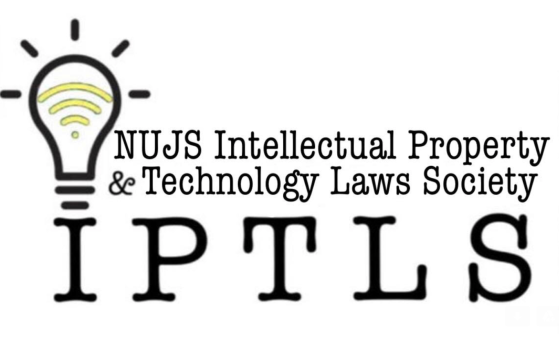by Priyanshi Sarin
In this post Priyanshi Sarin, a 4th year student from Symbiosis Law School Pune comments on the problems existing due to lack of Trade Secrets jurisprudence in India.

The subject matter of trade secret overlaps with copyright law, particularly in instances wherein courts have protected “customer lists” under the garb of literary works, which is also deemed as a trade secret by some jurisdictions. Nonetheless, in the Indian context, trade secret jurisprudence has a long way to go. The author believes so because the Copyright Act protects only “expressions” and not potential ideas which are capable of transforming into IPR. Moreover, the Patent Act extends its protection to innovations which have to be “disclosed” before the patent officer and excludes mathematical algorithms and computer programmes from its purview. Thus, potential ideas as well as algorithms can be dealt under the purview of Trade secret which is a formula, process, device or other business information that is kept confidential to maintain an advantage over the competitors. The “idea” seeks protection under the broad umbrella of “business information” and majorly includes business strategies, blueprints etc. which give the company a competitive edge over others.
In Kewanee Oil v. Bicron Corp. the US Supreme Court emphasized that the purpose behind trade secret law is “innovation” and observed that such a law prevents unnecessary hoarding of the information by the holder of trade secrets. In India, however, there is no clarification and clear compartmentalisation among trade secret, copyright law or contract law which gives rise to inconsistent judgments. In Burlington Home Shopping v Rajnish Chibber, it was held that copyright protection extends to the particular expressive arrangement of data and trade secret protection extends to the underlying data. However, the Supreme Court in the case of EBC v. DB Modak.,departed from the above principle by stating that compilation of pre-existing data does not form the subjective matter of copyright. Moreover, in the case of American Express v. Priya Puri the court deemed customer lists, business information and company data to be a “trade secret”. Thus, there persists contradictory views for assessing breach of confidentiality; whether company information falls under the garb of copyright? Whether such information are trade secrets?
In the absence of any legislation pertaining to trade secrets in India, businesses and small firms use confidential disclosure and non-competition agreements governed by the Indian Contract Act in an attempt to protect trade secrets. Companies can block a wide swath of information from the scrutinising eyes of consumers, and potential improvers. The defense taken by “reverse engineers” (i.e., those who take something apart to see how it works) is rendered futile when the company is able to show that the particular trade secret has been obtained by improper means. Secondly, consumer software licenses often contain restrictive clauses against product disassembly, decompiling, and other forms of reverse engineering. In order to evade the only possible limitation against trade secrets, firms distribute software in non-human-readable object code to prohibit reverse-engineering and hamper innovation and competition. Entities such as Google, Amazon and eBay provide consumers with valuable filtering services, however they often keep their sorting algorithms confidential by using trade secret law. This renders sellers on e-commerce platforms remediless when they wish to contest search engine results.
Indian companies are not even required to identify such loopholes, they can exercise complete discretion by imposing broad confidential agreements and non-compete agreements. Companies can do this because the Indian Contract Act does not consist of any limiting doctrines that consider the social benefits of unauthorized use.
Public health can be sacrificed when companies seek advantage of an absent legislation and bring everything under the purview of “confidential information”.This issue can be illustrated with the help of a hypothetical situation. Suppose, a former chemical industry executive who has signed a confidentiality agreement with his previous employer reveals in an Internet blog information about trade secret-protected studies for a coal processing chemical or a hydraulic “fracking” chemical that can leak into the water supply and significantly affect public health. Should he be penalised for making life-saving disclosures?
Fair Use
In India, Section 52 of the Copyright Act entails the fair use doctrine which is defined as privilege granted to a person other than the owner of a copyright to use the copyrighted material in a reasonable manner without his consent and not being penalised for it. The major ground for permitting “fair use” is that the use should not result in any commercial competition and monetary benefits for the user but rather promote freedom of expression, which includes the right to know as well as the right to elucidate “opinions” on literary work.
Unfortunately, the law on trade secret law is at a nascent stage and lacks any precedent by Indian Courts wherein the use of information is deemed as “fair use”. The implications of it are detrimental for the public at large, for the above cited reasons i.e. innovation and public health. Daniel Laster, an intellectual property rights expert designated as a law professor at the University of Washington, observed that Apple uses various methods to prevent others from accessing the requisite information to develop products that can interoperate with its iTunes platform. This limits consumers’ choice of products and secondly, by virtue of contract law the company is able to restrict others from learning the interfaces and protocols required for interoperability.
Trade Secrets are also extensively used by chemical industries. Recently, Freedom Industries, an American company, claimed trade secret protection of its coal-processing compound when faced with charges for a chemical leak which had contaminated drinking water of the residents, exposing them to medical sufferings. The company delayed disclosing information pertaining to the coal-processing for a very long time by claiming it as a trade secret. In India, a future situation wherein the company responsible for catastrophic leaks, such as Vizag Gas leak, attempts to claim trade secret protection for any of its processes and methods so as to restrict investigation, is certainly not called for.
Conclusion
It is suggested that in the absence of any trade secret law, the judiciary should define non-exclusive fair use “safe harbours” for trade secret law on lines similar to that of copyright act. Courts shall consider the purpose of use, extent of information used, market implications of use and most importantly, the element of larger public good which has been absent from the four factor test, evolved by courts when dealing with fair use of copyright. This step would be in close nexus with Article 7 and 8 of the TRIPS Agreement, which recommends protection and enforcement of IPR in a manner conducive to socio-economic welfare. Trade Secret law should not prima facie appear as being indifferent to societal needs due to the absence of a proper legislation. The author believes that creating categorical exemptions from trade secrets would bring in predictability and consistency. The long term solution is inevitably enacting a specific legislation for “Trade Secrets” which should provide precise sections pertaining to eligibility for being protected as a trade secret, assessment of damages, liability of the infringer even in the absence of a contract. Indian Law should derive inspiration from the Uniform Trade Secret Act (UTSA), which clearly defines the term “trade secret”.This legislation lays down the burden of proof on the plaintiff by objectively laying down essential pre-requisites for a successful claim and remedy. The Act is particularly beneficial because it objectively lays down the criteria for determining “misappropriation” of a trade secret. The author advocates the need for a “special law” on trade secrets which would override the general contract law provisions. Thereby, companies would not be able to prevent reverse-engineering by administering non-compete clauses.
Formulation and proper implementation of an Act like this would also be beneficial for companies who suffer immensely when their database gets stolen and they get embroiled in criminal litigation. It would protect whistle-blowers who often find themselves at odds with trade secret law while they intend to bring forth harmful health impacts and information relevant for public health and safety. Lastly, fair use doctrine within trade secrets would boost the innovation sector similar to how it promotes the development of literary work, education as well as enables creators to seek inspiration for musical and cinematographic works under copyright law.

One thought on “Trade Secrets: The Forgotten Intellectual Property Right”